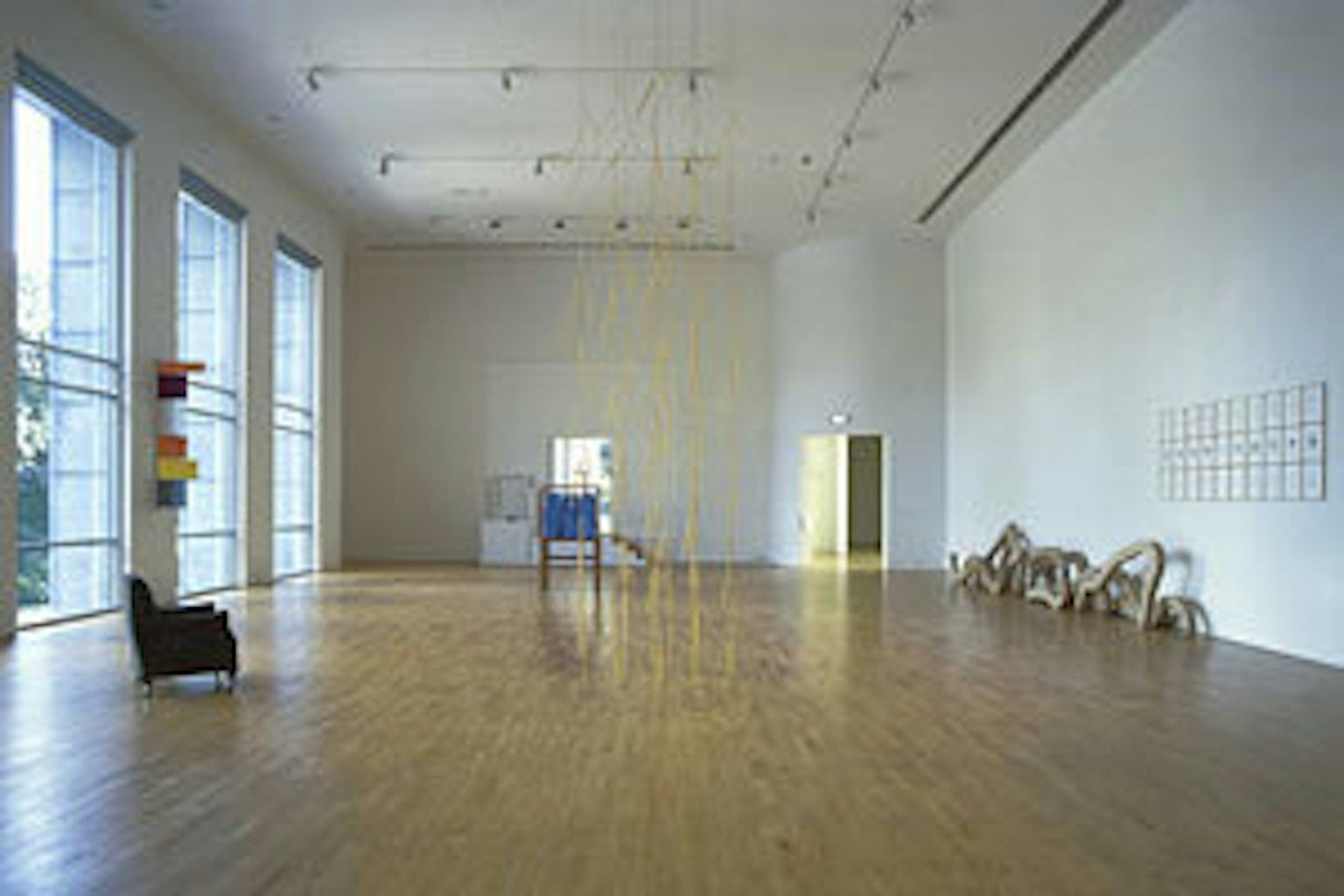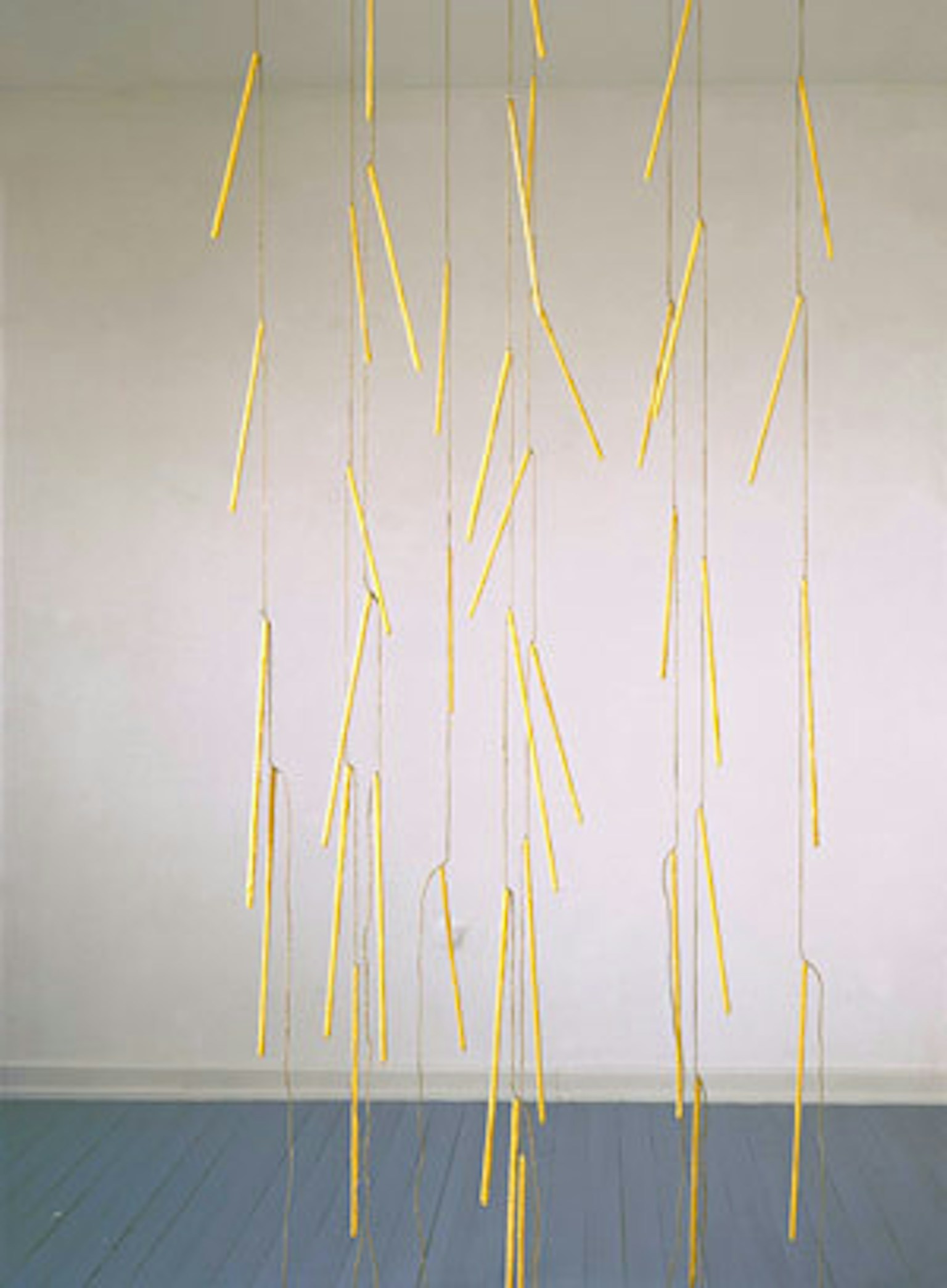La Robe des Choses
7.Sep.02

In art literature, the work of the German Jürgen Partenheimer (°1947, Munich) is traditionally considered to belong in Postminimalism or Conceptual Abstract Art.
Partenheimer’s work can certainly be partly explained by setting it in the tradition of minimalism. The images are sober, simple, linear and also poetic and full of tension. His paintings, drawings, sculptures and installations can also easily be placed under Conceptual Art. They are after all the result of a mental process. Language, literature and philosophy play a major part in Partenheimer’s work.
Partenheimer himself prefers to define his work using the less common term ‘metaphysical realism’. His works are much more than a depiction of thought. He is nevertheless able, especially in his drawings, to create a rich but simple and highly poetical visual idiom. The searching masses of lines, the colour planes and the floating geometrical forms seem more often to be inspired by non-Western mythologies than by the reality to be seen in our part of the world. In his frequently small works Partenheimer paints and draws a spiritual and lyrical reality in an exceptionally clear, simple way. This is often reminiscent of the magic and symbolism in the work of Paul Klee and Joseph Beuys. He has a striking preference for blue, white and soft colours like yellow and grey. Partenheimer takes as the conceptual basis for this exhibition La rôbe des choses, a piece from the French author Francis Ponge’s book A la rêveuse matière. Reality is a veiled and elusive thing. The only way to grasp it is by thinking. This thinking results, on the one hand, in concepts with which the tangible reality can be constructed and made accessible. On the other hand there will always be elements that are not amenable to pure reason and can only be made visible by means of art. Partenheimer’s work should be seen as the result of a long and consistent stream of thought by which means the artist intends not so much to reveal a particular reality, but rather to make clear the reflections linked to ‘being’ in this reality. Dogmas are often broken apart by new dogmas. This is precisely what Jürgen Partenheimer wants to avoid. He only finds the image interesting insofar as it is capable of repeatedly causing flows of thought. The principle of association is important both during the creation of the image and when looking at it. Thinking becomes one with the image, which is never simply a fixed item. A good example of this is Weltachse, a vertical axis composed of several blue cubes stacked on top of each other. The work always appears in a different form. This creates a unique tension between the sculptures and their surroundings. At SMAK a version of this sculpture can be seen in a display case. All the blocks are neatly stacked under a glass bell-jar. The viewer is invited to create the image himself.
This example shows that Partenheimer constantly wants to appeal to the viewers’ imaginative powers and mental capacities, which means that his work is never hermetically sealed. This is in contrast to the fact that the images at first sight often seem like closed, independent entities. Partenheimer is able, extremely effectively, to create a new world in which works of art are the signals and signs that can open doors to a supernatural, even spiritual reality. The SMAK exhibition is thus more than a survey of recent works. During one of the discussions that preceded the exhibition, it became clear that Partenheimer sees every exhibition as a unique statement. He does not react against the museum space. He transforms the space and makes sure it is not in any way noncommittal. He thereby redefines the museum as a place of dynamism and movement, as an essential part of public space and social debate. It is precisely because the space can be stripped of any dominant identity that the artist succeeds always in giving new meanings to the same spaces. Books also occupy a very prominent place in his work. This interest comes not only from a great love of the written word, which just like the image is a collection of signs, a veil that both conceals and reveals reality. The book is like a mental place, a unique and yet universal context in which both imagination and reflection belong. In addition, the book enhances the individual nature of the journey to which the reader is invited.
















